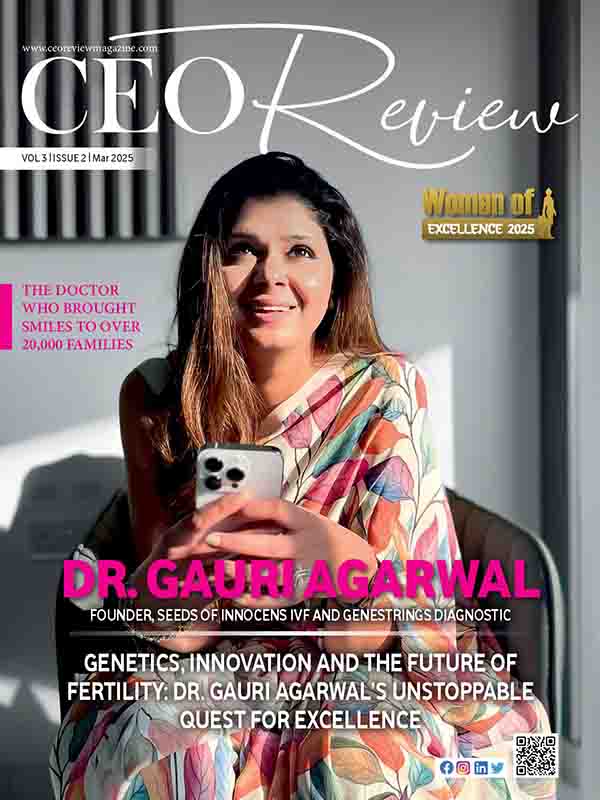Top 10 Best Emerging Technologies of 2024
The world is on the verge of transformative technological advancements that will alter industries and everyday existence in 2024. These emerging technologies, highlighted by top experts and bodies, are capable of improving innovations as well as solving complex problems to redefine lives and ways we work with others. Let’s look at each of these technologies more closely.
Let’s take a look at the list of Top 10 Emerging Technologies of 2024:
- AI-generated Content
Artificial Intelligence (AI) has revolutionized content creation by producing high-quality text, images, videos, and music. GPT and DALL-E algorithms capture users’ preferences resulting into rapid production of numerous contents across different sectors. This innovation helps democratize creativity tools for firms or individuals who want to have personalized, interactive, entertaining online materials.
2. Quantum Computing
Quantum computing applies principles in quantum mechanics to process information at rates far beyond classical computers’ speed limits. Its potential for addressing complex issues beyond traditional computer capacities are demonstrated by its applications in cryptography and drug discovery during 2024. Although still nascent technology development stages; quantum computers could potentially transform fields dependent on intensive computational power and precise simulations.
3. 5G Expansion
Global rollouts of the 5G networks bring about transformative connectivity inclusive of improved data speeds, low latencies as well as increased capacity. Apart from enhancing mobile communication platforms, 5G facilitates IoT networking systems (AR), autonomous vehicles that depend on real-time data transmission for their operation processes just like other connected gadgets do to its companionship46]. With the growth in this infrastructure it will be possible to see how innovative devices can operate within an ecosystem.
4. Virtual Reality (VR) 2.0
VR technology has matured through improvements in display quality image resolution tracking motion detection hardware developments etcetera.In gaming training simulation therapy VR 2 .0 offers more immersive experiences.Improving hardware accessibility like lighter headsets and longer battery life will make this technology more common among consumers and integrated with everyday lives.
Augmented Reality (AR) is transforming Retail
This gives consumers an opportunity to see products in their environment through mobile phones in the form of AR. Examples of these include virtual try-ons, which can be used for interactive product demonstrations to increase customer participation or even assist in making a decision on which brand to go for. That’s why retailers have started using it as an innovative approach that lowers return rates and boosts sales leading to new shopping experiences by merging online retailing and offline retailing.
Internet of Things (IoT) is Getting into Smart Cities
The IoT brings together devices and sensors that are connected in urban areas for efficient city management and service delivery. For example, real-time data from traffic monitoring systems help cities optimize travel patterns, energy efficiency programs that save money while reducing carbon footprints, or public safety initiatives which secure people’s lives where they live. This way, IoT provides data-driven solutions towards sustainable growth as cities expand by enhancing infrastructure development, resource management and social welfare for its citizens.
Biotechnology in Agriculture
Agricultural productivity improvement through gene editing and biopharmaceutical development with biotechnological advancements has been attained. By modifying crops exactly through technologies such as CRISPR so as to enhance yields, nutritional content or resistance against environmental factors among others. In other words, these innovations will play a major role in ensuring food security amidst climate change and population growth hence transforming agricultural practices towards more productive systems adapting well to different situations appropriately.
Self-Driving Cars
Artificial intelligence (AI) and sensor technologies are used by autonomous vehicles (AVs) in order to navigate and function independently, hence ensuring safer and more efficient means of transport. However, AVs are not fully self-driving cars but instead they relate to public transit and logistics with the objective of reducing accidents through enhanced traffic flow as well as reduced environmental pollution. For example, the availability of regulatory frameworks will make AVs instrumental in reshaping mobility, urban planning, and transportation logistics throughout the world.
Blockchain outside Cryptocurrency
Blockchain technology was originally made for cryptocurrencies but it is found in many industries that need transparent data keeping that is decentralized and secure. Specifically, some companies have adopted blockchain for supply chain traceability, security transactions among other uses such as tamper-proof record-keeping which increases trust while improving efficiency in operations. In addition to this diversification of its applications has led to new models of data integrity and transactional security presenting a challenge to old business ways.
Edge Computing
Edge computing decentralizes data processing by putting computation closer to the sources reducing latency time thus enabling real-time decision making processes that influence various operational aspects. Its purpose is also to minimize reliance on centralized cloud infrastructure so that IoT applications can operate along with autonomous systems or other low-latency demanding tasks. It matures by enhancing operational efficiencies and reliability within distributed networks thereby assisting businesses harnessing insights from their data more effectively.
Conclusion
These top 10 emerging technologies of 2024 demonstrate how synergies between different innovations can fundamentally change industries as well as societies’ mainstay rules. Some include AI-driven content creation meant for quantum computing’s computational power while others refer transformative powers found within 5G or the accuracy enabled through biotechnological advances all these case studies show important issues addressed alongside multiple possibilities opened up.
Apart from enhancing efficiency & productivity levels across different sectors, the technologies promote sustainability & inclusiveness. Hence, as they continue to change and become more adaptive to everyday use, our communication modes, work environment and how we stay within them will be greatly affected. This calls for strong infrastructure backbone, regulatory framework and ethical considerations in order to maximize gains from these advances while minimizing the risks.
Looking forward, the combination of these technologies offers hope in solving complex global problems, driving economic growth and improving people’s lives around the world. It is a journey that businesses across sectors will embrace collaboration and innovation as they try not only to create a technologically advanced future but also ensure that it remains dynamic and transformative in all aspects as possible.
This conclusion provides an overview of the impacts of these highlighted technologies on future development emphasizing their roles in making our world more connected, efficient and sustainable. If there are any other technology or aspect you would like me to elaborate further on please feel free to ask!







